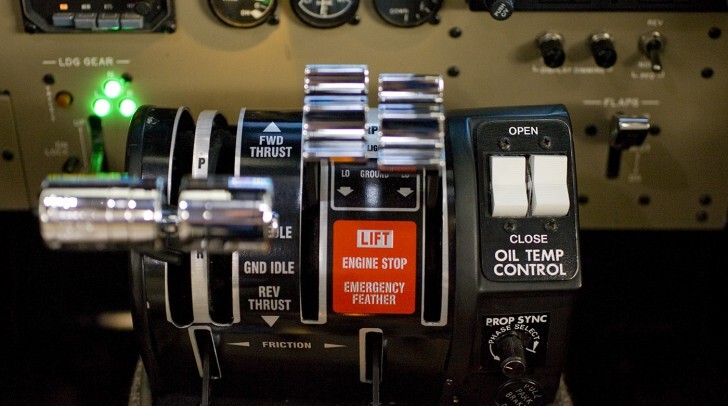First published in Flight Levels Online, Summer 2013 issue

Do you perform a “Feather Check” on each of your Twin Commander Honeywell powerplants prior to engine start? The procedure involves moving the Condition Lever aft to the Engine Stop/Emergency Feather position, and checking to make sure the NTS light extinguishes. The check confirms that in the event of a power failure the prop can be feathered to eliminate drag from the failed engine.
The Feather Check procedure is taught in SimCom’s simulator-based Twin Commander pilot training, and before that in FlightSafety International’s Twin Commander program. Twin Commander Aircraft is working to incorporate the procedure in aircraft flight manuals and pilot operating handbooks for the full range of Twin Commander turboprops.
The Condition Lever is connected by cable to the feathering valve located on the accessory pad of the gear case. When the lever is retarded to the Engine Stop/Emergency Feather position, the cable opens the valve, allowing oil to dump from the propeller dome to the gear case. Placing the lever in the Engine Stop/Emergency Feather position also blocks the oil supply line from the propeller governor.
The effect of dumping oil from the propeller dome and blocking the oil supply line to the propeller dome allows the springs and counterweights in the dome to move the blades to the feather position, thus greatly reducing drag from the unpowered prop.
When the feather valve is actuated by retarding the Condition Lever to the aft stop, a sensor extinguishes the NTS light for the appropriate engine. Thus, the Feather Check prior to engine start ensures that the cable-to-feather-valve connection is intact and that the feather valve is operational. If the NTS light does not extinguish, or if it does not illuminate upon returning the Condition Lever to the full forward position, then the cable-to-feather-valve integrity should be checked by a qualified technician.
